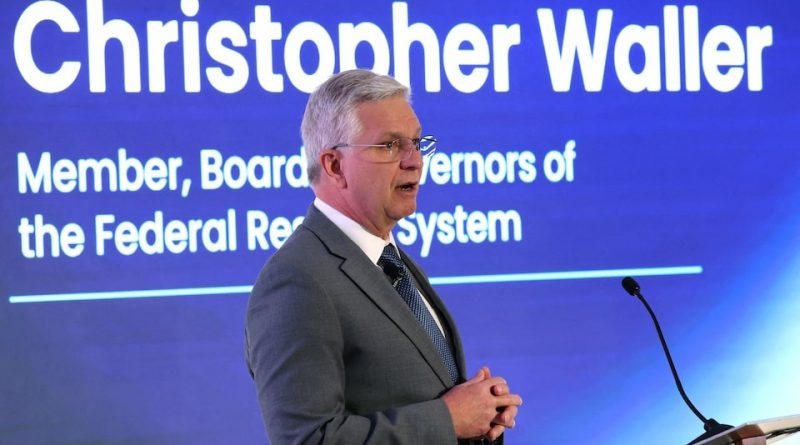Federal Reserve Explores New Streamlined “Payment Account” for Nonbank Firms
Washington – The U.S. Federal Reserve is exploring the idea of creating a new type of account that would give certain financial firms access to its payment services — an initiative aimed at keeping pace with rapid innovation in the payments industry.
The concept, referred to as a “payment account,” was outlined by Federal Reserve Governor Christopher Waller during a payments-focused conference held in Washington.
The proposed “payment account” would allow companies that currently depend on traditional banks or third-party intermediaries to connect directly to the Fed’s payment systems.
However, these accounts would not grant the same privileges as full bank master accounts, such as access to the Federal Reserve’s lending facilities or interest-bearing reserves.
Instead, they would provide limited, secure, and direct access for firms that perform payment-related activities but are not regulated as banks.
Waller emphasized that the initiative remains in the prototype stage, with no formal decisions yet made. The central aim is to explore how the Federal Reserve can modernize its approach to payments while maintaining financial stability and regulatory safeguards.
“Payments innovation moves fast, and the Federal Reserve needs to keep up,” Waller said in his remarks, noting that the evolving financial landscape now includes a wide range of participants — from traditional institutions to fintech startups and nonbank payment platforms.
The proposal reflects the Fed’s recognition that the financial ecosystem has changed significantly in recent years. Digital wallets, fintech firms, and real-time payment networks have reshaped how consumers and businesses transfer funds.
Many of these entities currently depend on partner banks to access the Fed’s payment rails, such as the Automated Clearing House (ACH) or Fedwire. The creation of a streamlined “payment account” could simplify this process, offering firms a more direct yet controlled entry point.
Under Waller’s vision, these accounts could come with several key limitations to ensure stability and minimize risk. For example, the accounts might be capped in balance size, not pay interest, and prohibit overdrafts.
They would not qualify for emergency borrowing through the Fed’s discount window, a privilege traditionally reserved for insured depository institutions.
However, firms applying for these accounts might benefit from a more efficient approval process, tailored to their operational scope rather than the broader requirements placed on banks.
This proposal also addresses ongoing debates about how far the Federal Reserve should go in granting nonbank entities access to its payment infrastructure.
Fintech companies and other payment providers have long argued that direct access would enhance competition, efficiency, and innovation in the financial sector.
Conversely, critics worry that expanding access could expose the central bank to greater operational and regulatory risks, especially if nonbank firms are not subject to the same stringent oversight as traditional financial institutions.
Waller acknowledged these competing perspectives and stressed that any potential rollout would depend on careful evaluation and consultation.
“The payments landscape, as well as the types of providers, has evolved dramatically in recent years, and accordingly, a new payments account could better reflect this new reality,” he said.
If implemented, the concept could represent a significant step toward broadening participation in the nation’s payment ecosystem while preserving the integrity of the Federal Reserve’s financial framework.
The initiative also aligns with the Fed’s broader efforts to foster innovation, including the development of FedNow — the new instant payment service launched to modernize real-time money transfers.
As the Federal Reserve continues its research, policymakers, regulators, and industry participants are expected to provide input on potential benefits and challenges.
The outcome could shape the future of how payment firms, both large and small, interact with the U.S. financial system — striking a balance between innovation, accessibility, and prudential oversight.



